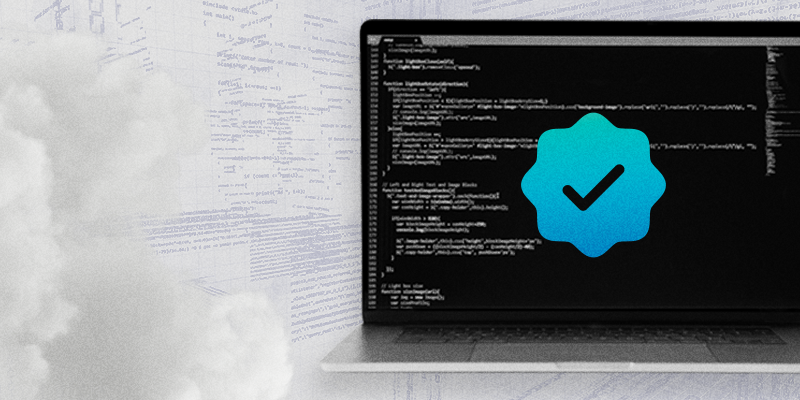
7 Tips for Maximizing Salesforce Code Quality Tools

An intentional approach to the adoption and maintenance of Salesforce code quality tools enables organizations to see the greatest security, quality, and productivity benefits.
Why It Matters: The quality of your code has a direct impact on the stability of the updates and applications produced in your DevOps pipeline. Low-quality code creates misfires, data security vulnerabilities, and redundant work for team members.
- Coding errors that make it through production create technical debt.
- Misfires in a live environment degrade the end-user experience and diminish your standing in the market.
Here are 7 tips to ensure your team sees the greatest benefits from Salesforce code quality tools:
- Take Time to Understand the Tool
- Utilize Customized Rulesets
- Provide Ample Training
- Run Regular Scans
- Leverage Static Code Analysis
- Monitor Trends
- Continuously Update Your Approach
1. Take Time to Understand the Tool
The very first step to maximizing the benefits of your Salesforce code quality tool is simply to take all the time you need at the outset to understand how to use it. There are likely a series of more advanced features that can only be utilized with the proper knowledge.
Consult all documentation and if training sessions are available, attend them. All background knowledge gained will support using the tool to its greatest capacity.
Learn the tool’s capabilities, limitations, and how they integrate into your development workflow.
2. Utilize Customized Rulesets

The Salesforce development environment is unique. General rulesets won’t always carry over to address your needs working within the platform.
Source a code quality tool that offers rulesets customized to address your needs.
CodeScan, for instance, has over 3,100 rules—more than 800 of them are specific to Salesforce DevOps. Take this a step further by customizing the rulesets to fit your organization’s coding standards.
3. Provide Ample Training
The knowledge gained at the outset of sourcing the tool needs to be thoroughly communicated to your entire DevOps teams. The functions, processes, and results of a Salesforce code quality tool will only improve your projects if your team knows how to harness them.
Provide thorough training sessions and answer every question your DevOps team members have to ensure they are comfortable using the Salesforce code quality tool.
This is your opportunity to empower developers to understand why certain rules are important and how they contribute to overall code quality.
4. Run Regular Scans

Templatizing your DevOps processes reduces confusion. Your team knows what to expect when certain functions are performed at predetermined stages.
Run scans regularly, ideally as part of your continuous integration process, to catch issues early and ensure consistent code quality across your Salesforce org.
Integrating code quality scans into your development pipeline gives your team members the tools they need to immediately rectify coding issues and produce reliable updates.
5. Leverage Static Code Analysis
Salesforce code quality tools can come in many forms. In fact, the best code quality tools offer a variety of security posture management functions that scan specific aspects of your Salesforce environment for inaccuracies and vulnerabilities. But when it comes to code strength, static code analysis is an essential tool.
Use static code analysis tools to identify potential issues in your codebase without executing the code.
This helps catch common mistakes, such as SOQL injection vulnerabilities, before they become problems in production.
6. Monitor Trends
Your DevOps tools can compile metrics into automated reports that cover critical areas like code coverage, maintainability scores, and rule violations. These metrics need to be tracked over time.
Metrics provided by DevOps tools help teams identify areas for improvement and track the impact of your efforts to enhance code quality.
These trends need to be observed and tracked to root out any mistakes that can be fixed and avoid negative outcomes in the future.
7. Continuously Update Your Approach

No DevOps strategy will remain perfect forever. There are always going to be adjustments that can be made to improve current processes and address emerging threats.
Schedule repeated audits of how you utilize your Salesforce code quality tools to ensure your approach remains current.
Solicit feedback from developers, review code quality reports, and adjust rulesets as needed to adapt to changing requirements and evolving best practices.
Next Step…
Salesforce code quality tools are an indispensable part of a streamlined DevOps pipeline. But along with specialized technology, your team also needs to work together to see the greatest results.
Check out our blog, The Ultimate Guide to Salesforce Version Control, to learn how you can facilitate collaboration and give your team members everything they need to succeed.
FAQs
How often should code quality scans be performed in a Salesforce DevOps pipeline?
Ideally, code quality scans should be performed with each code commit or pull request. Integrating code quality scans into the CI/CD process ensures that potential issues are caught early in the development cycle, minimizing technical debt and reducing the risk of introducing bugs or performance issues into live Salesforce environments. By running scans regularly, developers can quickly address any code quality issues, maintaining a high standard of code quality throughout the development life cycle and promoting a more efficient and reliable deployment process.
What are some common challenges when using code quality tools in Salesforce DevOps?
Complex configurations of code quality tools—particularly when customizing rulesets to align with organizational standards—can create issues for Salesforce DevOps tools. Those with existing CI/CD pipelines can find it challenging to integrate a new code quality tool into current processes. Additionally, it can be difficult to ensure the adoption of code quality practices by developers, as it requires continuous education and reinforcement of the importance of adhering to coding standards. Interpreting and prioritizing the large volume of code quality findings can be overwhelming, necessitating effective strategies for triaging and addressing issues efficiently.
How can organizations ensure developers stick to best practices for Salesforce code quality tools?
Comprehensive training and documentation on tool usage and coding standards are critical for helping developers adhere to the organization’s standards. Encouraging collaboration and peer code reviews fosters accountability and reinforces adherence to best practices. Integrating code quality checks into the CI/CD pipeline automates enforcement, making it seamless for developers to follow standards during development. Regular feedback loops, coupled with metrics tracking, help identify areas for improvement and recognize adherence to best practices. Finally, establishing a culture that values code quality and recognizes its impact on long-term maintainability and scalability encourages developers to prioritize and uphold best practices consistently.

